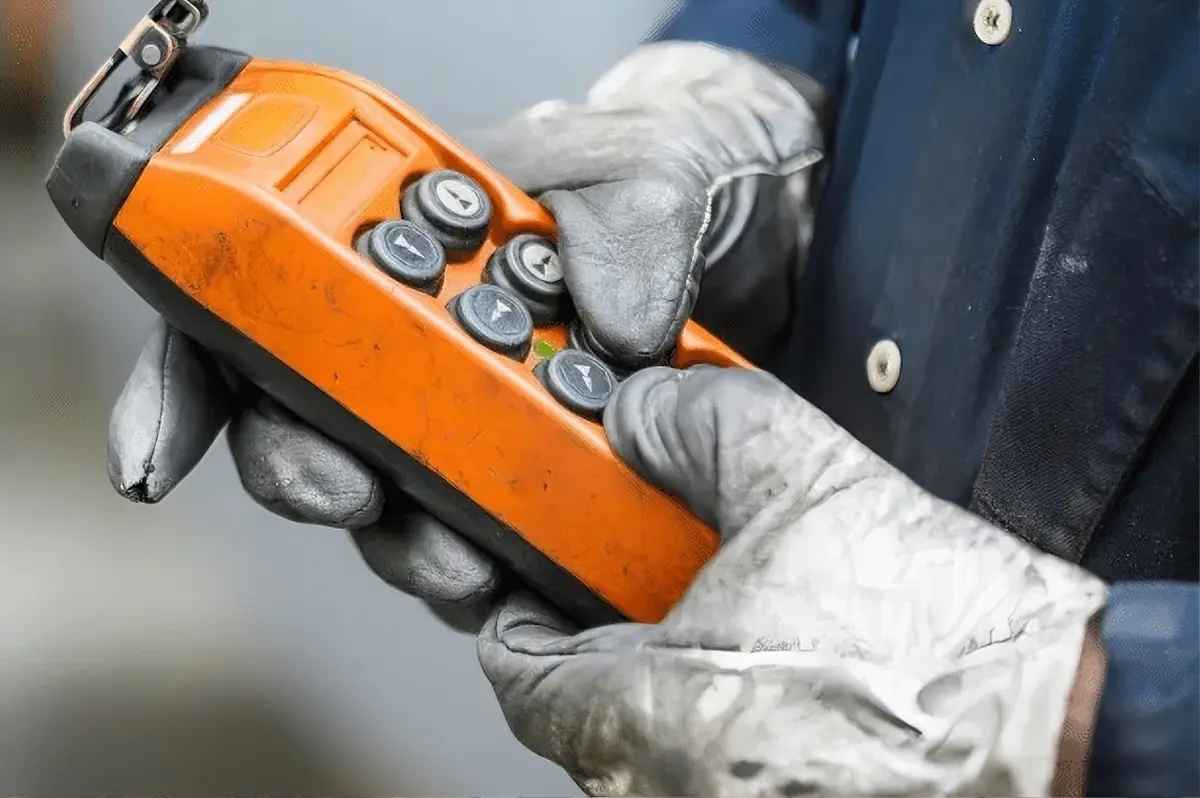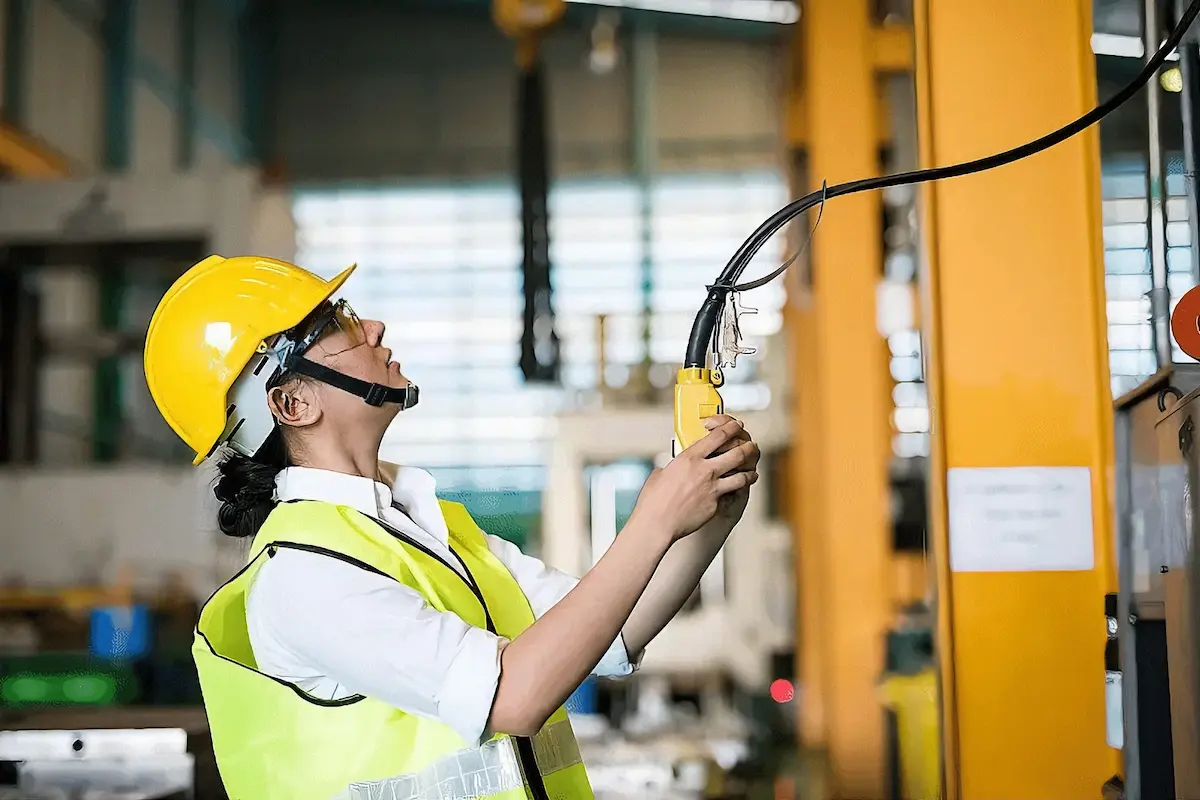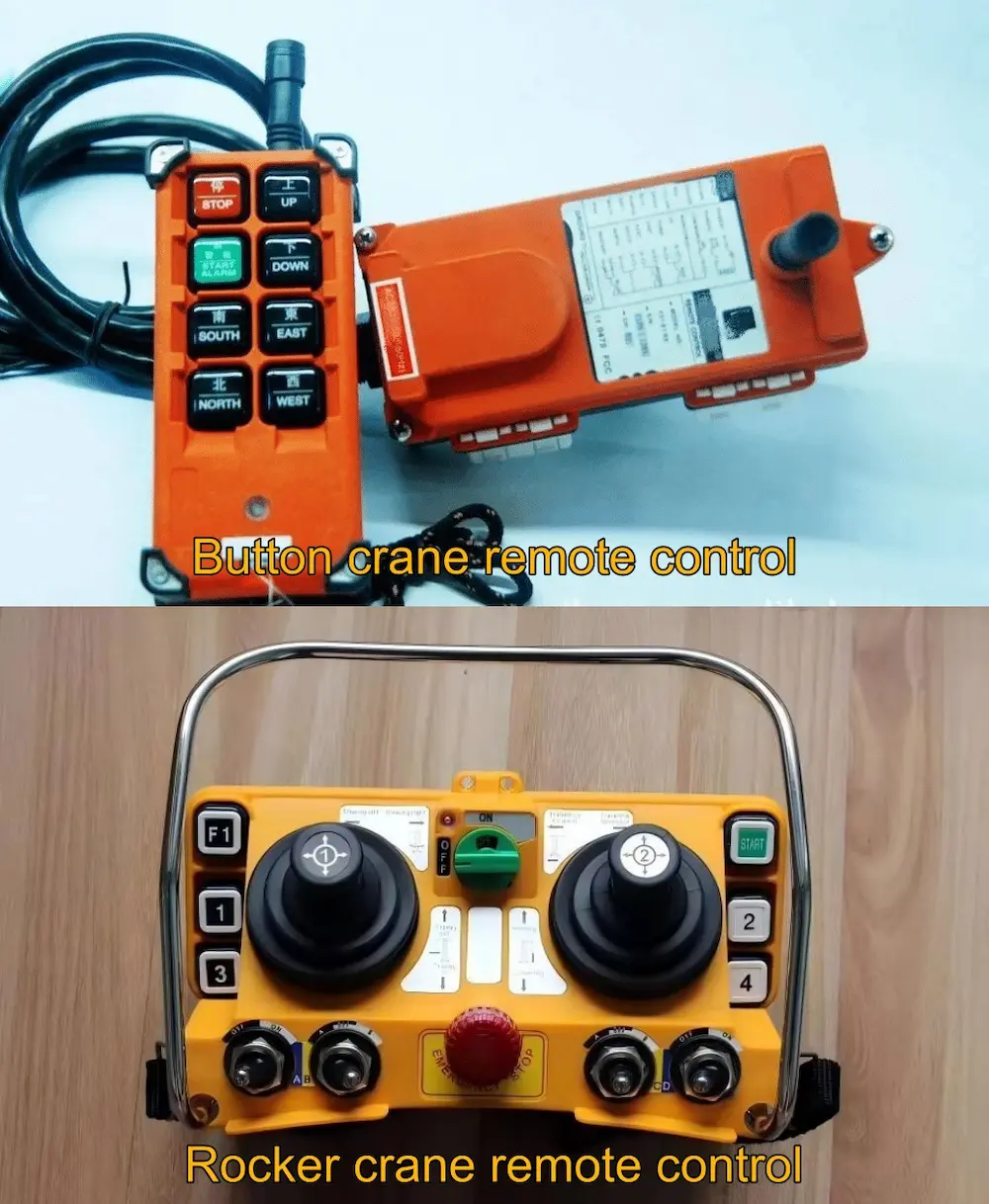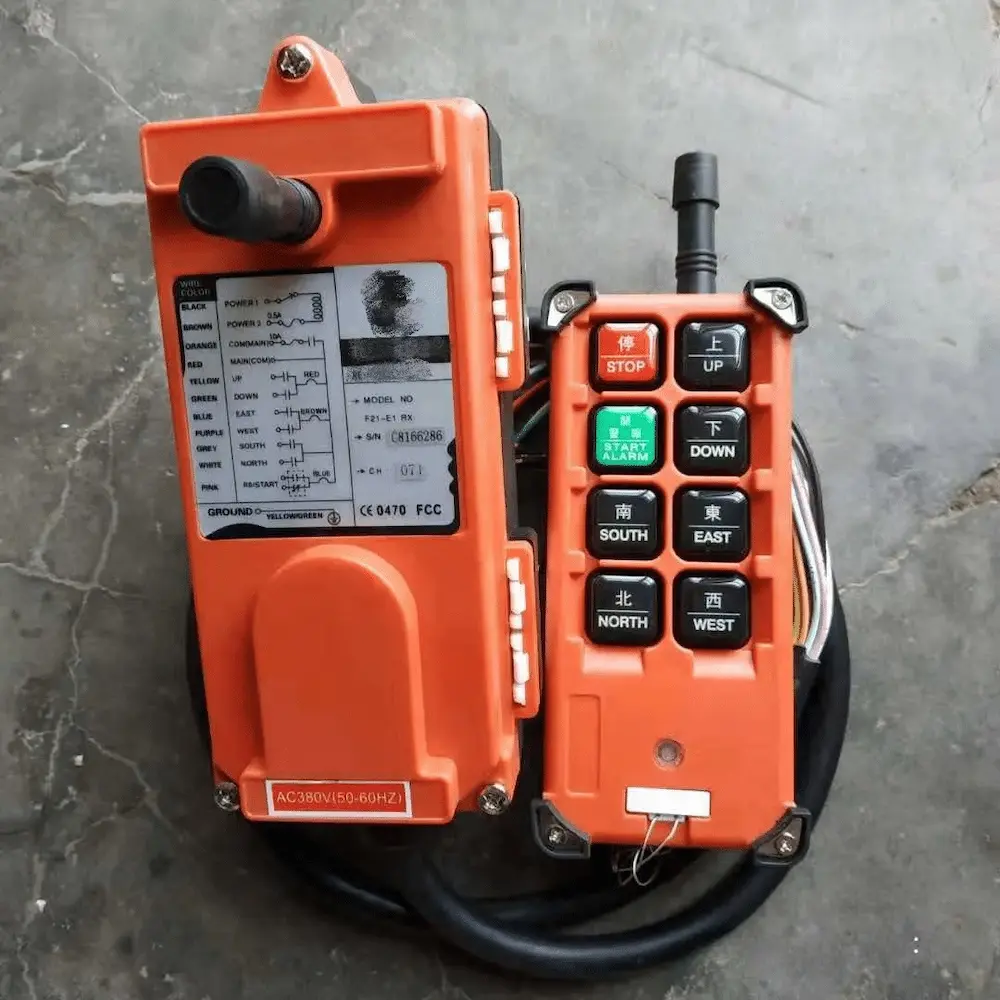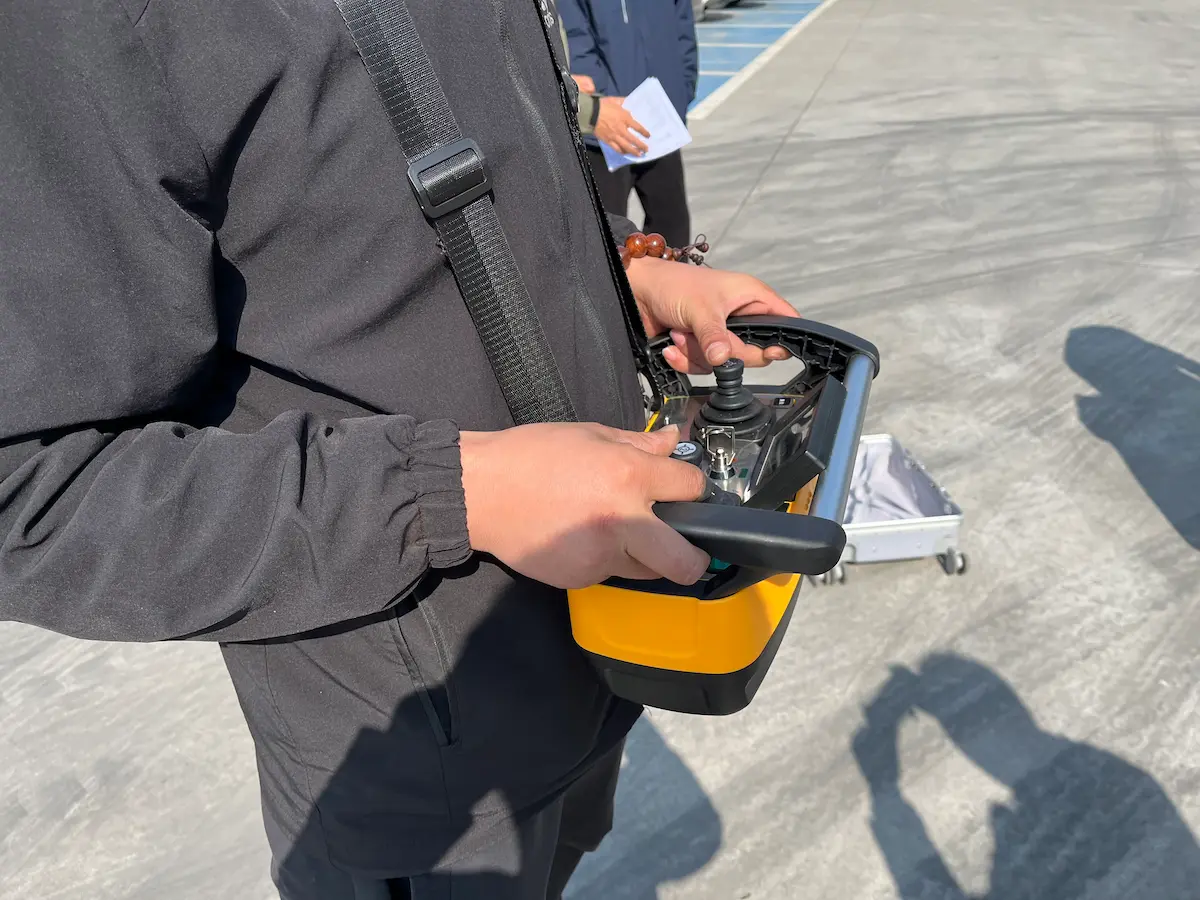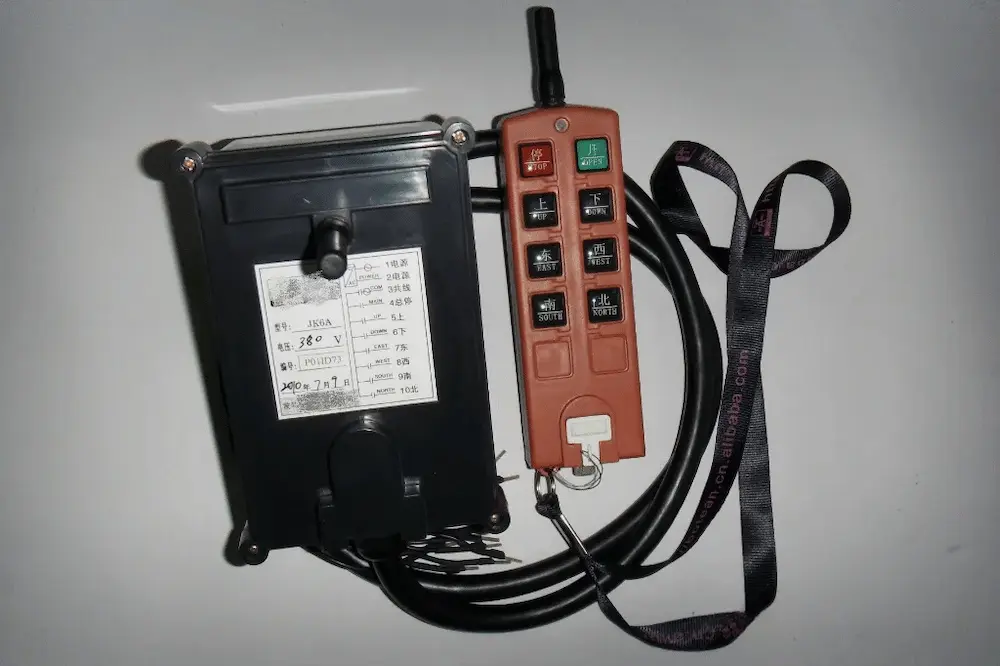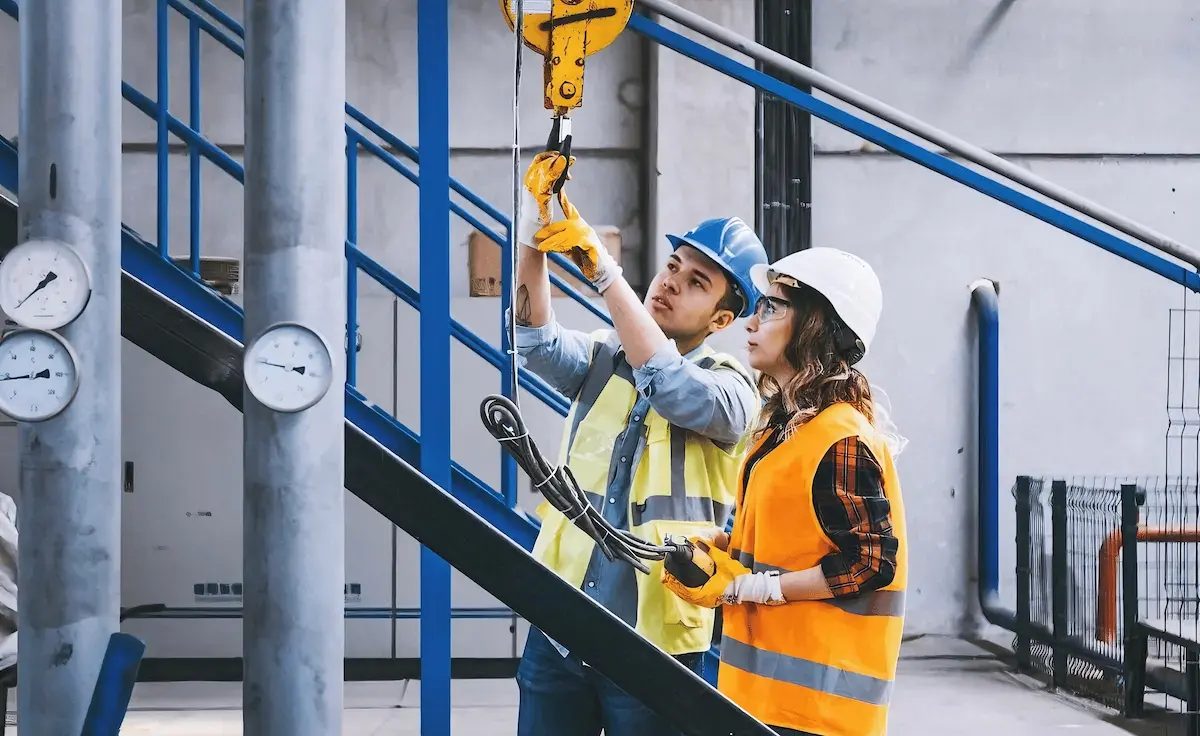In today’s era of industrial automation and intelligence, cranes remain the core force of material handling. Their control systems are undergoing a profound transformation toward smarter operation. From traditional wired and joystick controls to advanced wireless intelligent systems, operation methods have evolved significantly. This upgrade has reshaped workers’ operating modes and greatly improved on-site safety and efficiency. The emergence of industrial crane remote controllers allows operators to control lifting processes precisely from a safe distance. It helps avoid potential hazards caused by working in high-risk areas. Meanwhile, remote control reduces dependence on multiple personnel, making lifting operations more flexible and efficient.
Types and Features of Crane Remote Controllers
According to different operational needs and working conditions, crane remote controllers are mainly divided into two types: wired and wireless. Each type offers unique advantages and plays a key role in different applications, empowering modern lifting systems and promoting industrial safety and intelligence.
Wired Crane Remote Controller
- Working Principle: Connected directly to the crane control cabinet via cables, it transmits control signals through physical wiring.
- Key Advantages: Strong anti-interference capability, unaffected by electromagnetic noise, dust, or harsh environments. It features low signal delay and fast command response.The structure is simple, with low maintenance costs.
- Main Limitations: The operating range is restricted by cable length, reducing flexibility. Cables wear and age easily, requiring frequent replacement. Not suitable for outdoor or high-altitude operations.
- Applications: Ideal for fixed-position bridge cranes and gantry cranes. Common in small workshops handling light loads. Suitable for stable indoor environments with limited operating areas.
Wireless Crane Remote Controller
|
Category |
||
|
Structure Features |
Simple key layout with 6–12 function buttons (lifting, traveling, start, emergency stop, etc.) | Joystick as main control unit, enabling multi-directional and proportional control |
|
Main Advantages |
Intuitive operation, quick response, easy maintenance | High control precision, supports multi-action linkage, smooth start and stop |
|
Typical Applications |
Single-girder bridge cranes, jib cranes, light gantry cranes | Large bridge cranes, metallurgical cranes, shipyard cranes, port gantry cranes |
|
Feature Summary |
Cost-effective and ideal for standard operations | Suitable for complex or precise lifting, requires experienced operators |
Core Components and Functions of a Crane Remote Controller
Main Components
- Transmitter: A handheld control device integrating buttons, joysticks, or knobs for input.It includes an internal signal encoder that converts commands into coded signals.
- Receiver: A fixed unit installed on the crane body that receives and decodes signals, then triggers the crane’s contactor or PLC to perform corresponding actions.
- Signal Module: Includes antennas or cable interfaces for transmission stability. Some advanced models feature anti-interference filters.
- Power System: Supplies power to the transmitter via rechargeable batteries with power monitoring and alerts. The receiver connects directly to the crane’s main power supply.
- Emergency Stop Device: Both transmitter and receiver include independent emergency stop buttons.Pressing them instantly cuts power to halt all operations, ensuring safety in emergencies.
Key Functions of Crane Remote Controllers
- Basic Operation Control: Enables essential crane movements such as lifting, lowering, trolley and bridge travel, and rotation.Supports multi-speed adjustment for different loads and workflows.
- Anti-Interference and Multi-Channel Design: Uses fixed or frequency-hopping channels to prevent signal overlap. Multi-channel switching allows multiple cranes to operate in the same area safely.
- Status Monitoring and Alarms: Continuously monitors transmitter battery level with low-power alerts.Some models provide feedback on crane conditions such as overload or faults.
- Interlock and Anti-Misoperation System: Software prevents conflicting commands and restricts access for linked cranes. Reduces risks of collision or overload, especially in multi-crane coordination.
Core Advantages of Crane Remote Controllers
- Enhanced Operational Safety: Operators can stay away from lifting zones, avoiding work under suspended loads or at heights. This greatly reduces personal injury risks.With emergency stop and signal-loss protection, the crane halts instantly in emergencies, ensuring site safety.
- Improved Lifting Efficiency: A single operator can complete multiple actions—hoisting, traveling, speed adjustment, and precise positioning. This reduces labor needs, time, and cost.High-speed signal transmission ensures accurate and smooth crane response.
- Greater Flexibility: Wireless controllers eliminate cable restrictions, allowing free operation across wide or obstructed areas. Operators can choose optimal viewing or safe positions, avoiding blind spots and improving accuracy.
- Simplified Maintenance: Modular design enables quick replacement or upgrades, reducing long-term maintenance costs. Power monitoring and low-battery alarms prevent failures caused by sudden power loss.
- HSCRANE Smart Customization: The anti-collision system prevents accidents when multiple cranes operate simultaneously. Data monitoring records lifting history, load conditions, and usage frequency for better management. Limit protection, speed control, and interlock systems can be customized to different conditions, enhancing reliability and precision.
Selection Guide: How to Choose the Right Crane Remote Controller
When choosing a crane remote control, you need to consider the following aspects to ensure that the equipment is safe to operate and can meet the working conditions:
|
Selection Aspect |
Key Considerations |
Applicable Scenarios / Description |
| Type Selection | Wired Controller | Fixed workstations, light-duty operations, small workshops. Simple structure, strong interference resistance, limited range acceptable. |
| Wireless Controller | Wide-range operations, complex environments, multi-crane coordination. Offers high flexibility, requires moderate cost and maintenance. | |
| Control Range | Short Range (<100 m) | Indoor or short-distance lifting within workshops, small cranes. |
| Medium Range (100–300 m) | Large factory transfers, yard loading and unloading. | |
| Long Range (>300 m) | Port container handling, outdoor heavy construction, or cross-zone operations. | |
| Function Level | Basic Model | Standard lifting, lowering, traveling, and emergency stop. For simple lifting tasks. |
| Multi-Function Model | Includes speed adjustment, limit protection, dual-crane linkage. For medium-complex operations. | |
| Intelligent Model | Offers data monitoring, collision warning, remote diagnostics, and customizable logic. Ideal for precision or automated lines. | |
| Safety Standards | International / Industry Certification | Must comply with FEM, EN, ISO, CE, or FCC standards for safety and compliance. |
| Compatibility & Customization | Equipment Compatibility | Must match crane type (bridge, gantry, or jib) and control cabinet protocol. |
| Customized Features | Tailored options for key layout, frequency band, protection level, operation mode, or smart functions. |
HSCRANE Crane Remote Control Solutions
HSCRANE is dedicated to providing global clients with efficient, safe, and intelligent crane control experiences.Its independently developed wireless crane control system adopts advanced industrial communication technology and offers the following core advantages:
- Proprietary Wireless Control System: Based on HSCRANE’s self-designed industrial communication platform, the system ensures stable signals and fast response. It supports multi-crane coordination, master–slave switching, and anti-interference design, maintaining precise control even in complex electromagnetic environments.
- International Standards and Reliability Assurance: The remote control system strictly complies with FEM, ISO, and EN international standards. All key components undergo intensive durability testing to ensure long-term reliability and safety under frequent use and harsh conditions.
- System Integration and Comprehensive Service Support: HSCRANE provides integrated services from system design and installation to maintenance. Whether for single-equipment upgrades or multi-crane group control customization, solutions are tailored to client needs for efficient, safe, and intelligent lifting management.
Crane remote controllers are not only the “nervous system” of lifting equipment but also the key to achieving intelligent and safe operation. Whether using wired or wireless systems, proper selection and professional integration are vital for reliable performance and extended lifespan.
Choose HSCRANE for intelligent remote control solutions that meet international standards — from design and integration to after-sales support — empowering your lifting operations with greater efficiency and safety.
Contact us today to get your customized crane remote control system!


